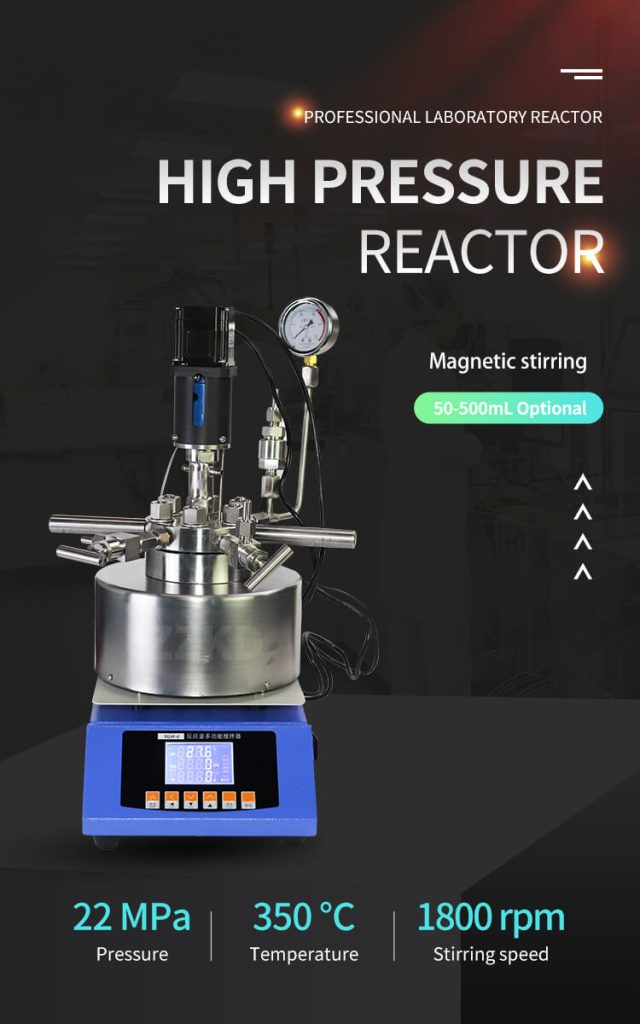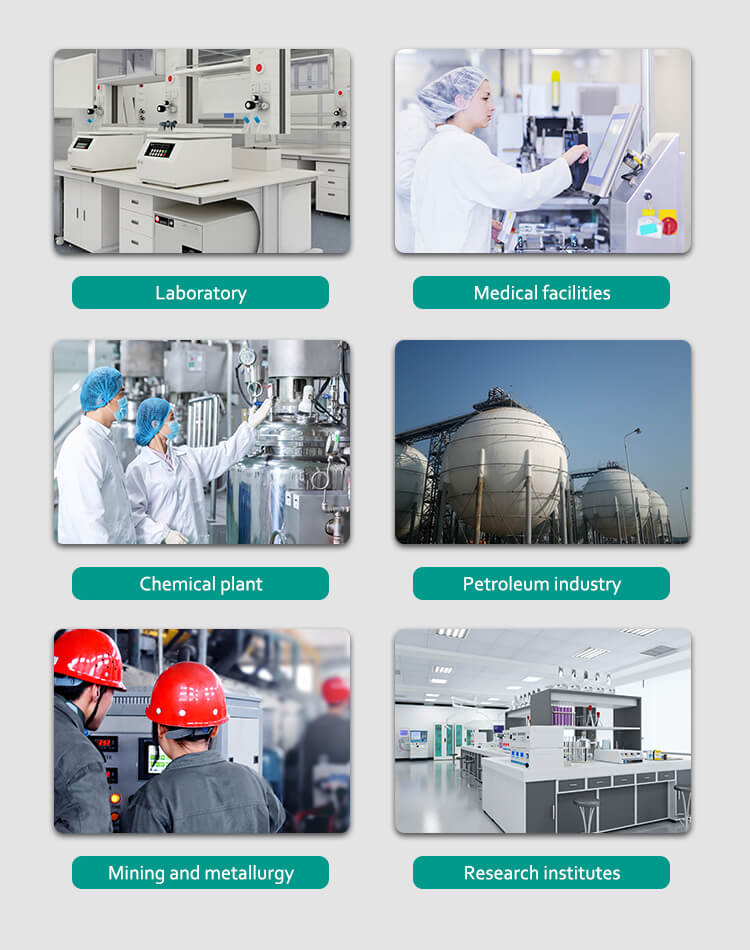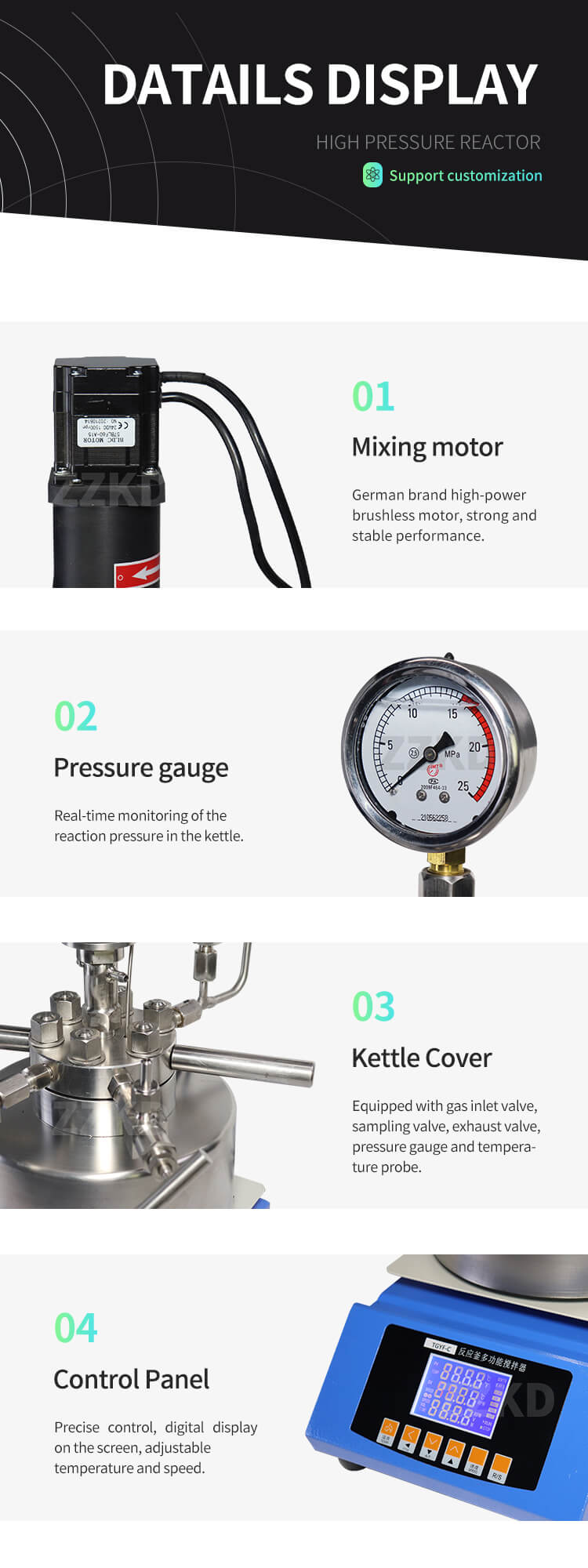The high pressure high temperature reactor (HPHT) is a remarkable innovation in advanced technology and scientific exploration. It operates under extreme conditions, allowing researchers to delve into new frontiers of materials synthesis, energy production, and scientific breakthroughs. The HPHT reactor harnesses immense power, creating a conducive environment for unique chemical reactions and material transformations. In this article, we explore its applications, capabilities, and advantages for industries and scientific fields.
I. Unveiling the High Pressure High Temperature Reactor

A. Understanding the Fundamentals of High Pressure High Temperature Reactors
The first step in exploring the high pressure high temperature reactor is to understand its fundamental principles. These reactors are designed to operate at elevated pressures and temperatures, far beyond standard conditions. By creating such extreme environments, researchers can trigger novel chemical reactions and observe extraordinary material behavior.
B. Key Components and Design Principles
A high pressure high temperature reactor consists of several key components, including a high-strength reactor vessel, heating elements, pressure control systems, and safety measures. The reactor vessel must withstand immense pressures and temperatures while ensuring the safety of operators and the surrounding environment. Design principles prioritize both functionality and safety, incorporating materials that can withstand the extreme conditions.
C. Advancements in High Pressure High Temperature Reactor Technology
Over the years, significant advancements have been made in high pressure high temperature reactor technology. Enhanced materials, improved control systems, and more efficient heating methods have revolutionized the capabilities of these reactors. Modern high pressure high temperature reactors offer precise control over pressure and temperature, enabling researchers to conduct experiments with unprecedented accuracy and reproducibility.
II. Applications of High Pressure High Temperature Reactors
A. Diamond Synthesis and Industrial Diamond Production
High pressure high temperature reactors have revolutionized the diamond industry. By subjecting carbon-based materials to extreme pressures and temperatures, synthetic diamonds can be produced with properties comparable to natural diamonds. This application has transformed industries such as jewelry, cutting tools, and electronics, offering a sustainable and cost-effective alternative to mined diamonds.
B. Materials Science and Advanced Material Development
The high pressure high temperature reactor plays a crucial role in materials science, enabling the synthesis of novel materials with exceptional properties. By subjecting precursor materials to extreme conditions, scientists can induce structural changes, modify crystal lattice arrangements, and produce materials with enhanced strength, conductivity, or catalytic activity. These advanced materials find applications in aerospace, electronics, energy storage, and many other fields.
C. Energy Production and Efficiency Enhancement
The pursuit of clean and efficient energy sources is a global priority. High pressure high temperature reactors contribute to this endeavor by enabling the development of advanced energy conversion technologies. From the synthesis of advanced fuels to the optimization of thermoelectric materials, high pressure high temperature reactors hold the potential to revolutionize energy production and efficiency.

III. Case: High Pressure High Temperature Reactor in Diamond Synthesis
A. Introduction to Synthetic Diamonds
To illustrate the practical application of high pressure high temperature reactors, let us delve into the field of synthetic diamond production. Synthetic diamonds are created by subjecting carbon-based materials to high pressures and temperatures, mimicking the natural diamond formation process. high pressure high temperature reactors play a pivotal role in this process, facilitating the growth of high-quality synthetic diamonds with remarkable clarity and hardness.
B. The Role of hHigh Pressure High Temperature Reactors in Diamond Synthesis
In diamond synthesis, high pressure high temperature reactors provide the necessary conditions for diamond formation. By applying high pressures of several gigapascals and temperatures exceeding 1,500 degrees Celsius, the carbon atoms rearrange and bond together to form diamond crystals. The controlled environment of the high pressure high temperature reactor allows precise manipulation of the growth parameters, resulting in diamonds with desired characteristics.
C. Industrial Applications and Advantages of Synthetic Diamonds
Synthetic diamonds produced with high pressure high temperature reactors have revolutionized various industries. Their high purity, exceptional hardness, and consistent quality make them ideal for cutting and grinding tools used in the construction, mining, and manufacturing sectors. Additionally, synthetic diamonds find applications in high-performance electronics, optical components, and even as a potential alternative for energy storage in batteries.

IV. Advantages and Challenges of High Pressure High Temperature Reactors

A. Enhanced Reaction Rates and Unique Material Properties
high pressure high temperature reactors offer the advantage of significantly enhanced reaction rates. By operating under extreme conditions, chemical reactions that may be sluggish at ambient conditions can occur rapidly. Moreover, the extreme pressures and temperatures induce structural changes, resulting in materials with unique properties and enhanced performance in various applications.
B. Energy Efficiency and Environmental Impact
High pressure high temperature reactors have the potential to improve energy efficiency in various processes. By optimizing reaction conditions, minimizing waste, and enabling cleaner production methods, high pressure high temperature reactors contribute to sustainable development goals. However, challenges such as energy consumption and the proper handling of reaction byproducts need to be addressed to ensure their environmental impact is minimized.
C. Scaling up and Industrial Implementation Challenges
While high pressure high temperature reactors have demonstrated immense potential, scaling up the technology for large-scale industrial implementation presents challenges. The high costs associated with constructing and operating high pressure high temperature reactors, as well as the need for robust safety measures, pose obstacles for widespread adoption. Continued research and technological advancements are necessary to overcome these challenges.
V. Future Outlook and Potential Developments
A. Miniaturization and Portable High Pressure High Temperature Reactors
As technology advances, the miniaturization of high pressure high temperature reactors holds promise for expanding their applications. Portable high pressure high temperature reactors could enable on-site material synthesis, catalytic reactions, and geological studies. These compact systems would bring the benefits of extreme conditions to various fields and enhance research capabilities.
B. Synergistic Applications with Other Technologies
Combining high pressure high temperature reactors with other technologies, such as advanced imaging techniques and machine learning algorithms, could unlock new possibilities. The integration of real-time monitoring, process control, and data analysis can enhance the efficiency and effectiveness of high pressure high temperature reactor operations, leading to faster discoveries and accelerated development of advanced materials.
C. Exploring Extreme Environments and Beyond
High pressure high temperature reactors have opened doors to exploring extreme environments beyond Earth. Scientists are utilizing high pressure high temperature reactors to simulate conditions found on other planets, moons, or even in the deep oceans. By recreating these extreme environments, researchers gain insights into the behavior of materials and chemical reactions under such harsh conditions, expanding our understanding of the universe.
In conclusion, the high pressure high temperature reactor is a remarkable innovation that unleashes the power of extreme conditions. Its applications span diverse fields, including diamond synthesis, materials science, catalysis, geoscience, and energy production. The controlled environment of high pressure high temperature reactors enables precise manipulation of reactions and material properties, offering immense potential for technological advancements. While challenges exist, ongoing research and technological developments hold the key to unlocking the full capabilities of high pressure high temperature reactors, paving the way for groundbreaking discoveries and transformative applications in the future.

